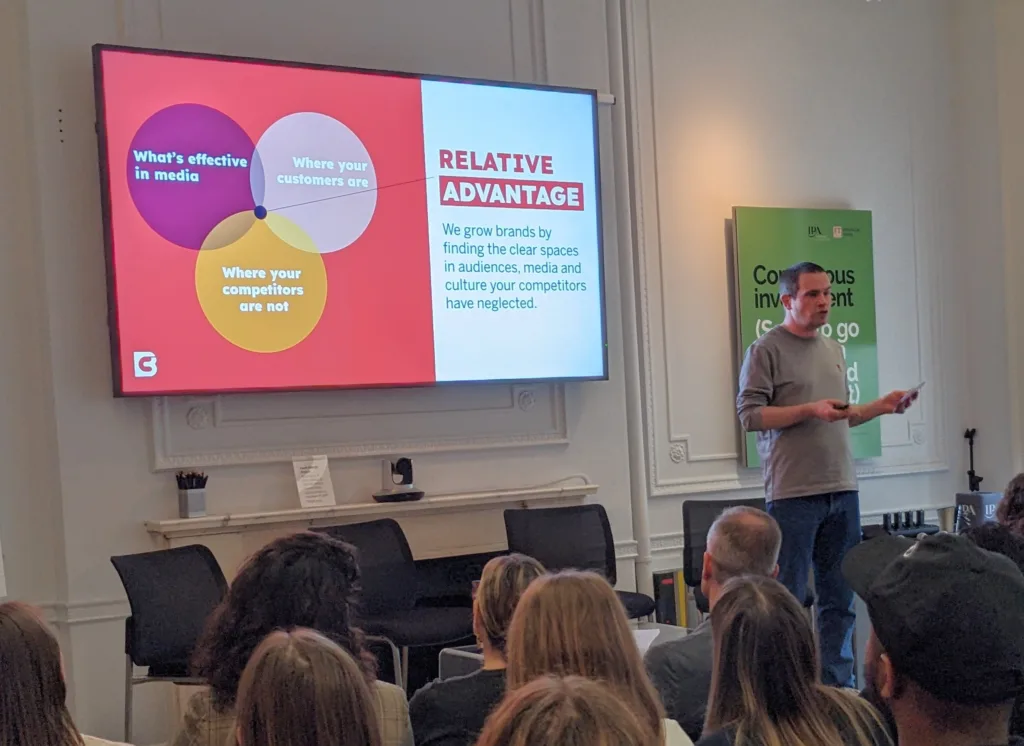Research from Bountiful Cow, a leading independent UK media agency, has found that brands adopting Relative Advantage growth principles can deliver a significant uplift across brand metrics and business performance. Analysis of 236 advertising campaigns from the IPA Databank demonstrated the impact of Relative Advantage as a growth framework particularly relevant for challenger brands.
Relative Advantage focuses on approaching one or more elements of planning strategy with the ambition to be distinctive from category norms and to grow market share in unique spaces, contexts, environments, and moments that competitors have overlooked. Unlike conventional laws of brand growth, which predominantly focus on driving excess share of voice (ESOV) by outspending the competition, Relative Advantage looks to outsmart the competition, to gain share in unique and under-utilised spaces.
Launching the research, Adam Foley, CEO, Bountiful Cow, said: “When you can’t outspend your competition you have to out-think them. You’ll never win by doing the same thing with less money; it’s about seizing opportunities that competitors overlook or neglect. We call this approach ‘Relative Advantage,’ and it guides every aspect of our work, from strategy to planning to implementation. In this pioneering study, we can see the tangible impact that the Relative Advantage growth principle delivers – it really does pay to stop following the herd.”
To examine the hypothesis that brands adopting a position of Relative Advantage to their competitors, are able to grow their market at a greater rate than their share of voice would typically allow, Bountiful Cow analysed over 200 cases from the IPA Databank. 55 cases were identified as Relative Advantage (the sample), and a further 181 that didn’t (control). All selection was done blind of the effectiveness data in line with IPA protocol.
The key findings show:
- Relative Advantage campaigns are 15% more likely to show at least 1 very large brand effect. They are 60% more likely to have a very large effect on awareness, 22% more likely on differentiation and 17% more likely for commitment (loyalty), suggesting a longer-term benefit to the brand and the business.
- RA campaigns deliver a 9% uplift in very large business effects. Specifically, Relative Advantage appears to outperform the control group in generating sales, in acquiring new customers and in generating very large profit gains.
- Relative Advantage pays back. And some. The average return on marketing investment for Relative Advantage brands stands at 500%, a 40% increase above the control.
The research was conducted by a team of experts from Bountiful Cow, led by Chetan Murthy and Sam Barton, in association with the IPA Databank, and independent effectiveness consultant, Peter Field.
“When the established conventions of brand growth are beyond the means of challenger brands, they need a different playbook. Defying category norms and applying Relative Advantage media behaviours is a way for challengers to chart their own course to brand growth, free from the gravity of rules that were never intended for them,” said Murthy.
Laurence Green, Director of Effectiveness at the IPA, added: “This is an important study which clearly identifies a new approach to growth, that is more aligned to challenger brands and start-ups. It also marks an important step in IPA Databank learning. We hope this will encourage other members to test new hypotheses and brand-building theories against our comprehensive Databank of effectiveness case studies.”
Bountiful Cow combines media planning and buying capabilities alongside wrap around branding services offered through their recently launched consultancy arm BC2, designed to address the full spectrum of growth challenges facing brands today.
A summary of the Relative Advantage study is available here.








